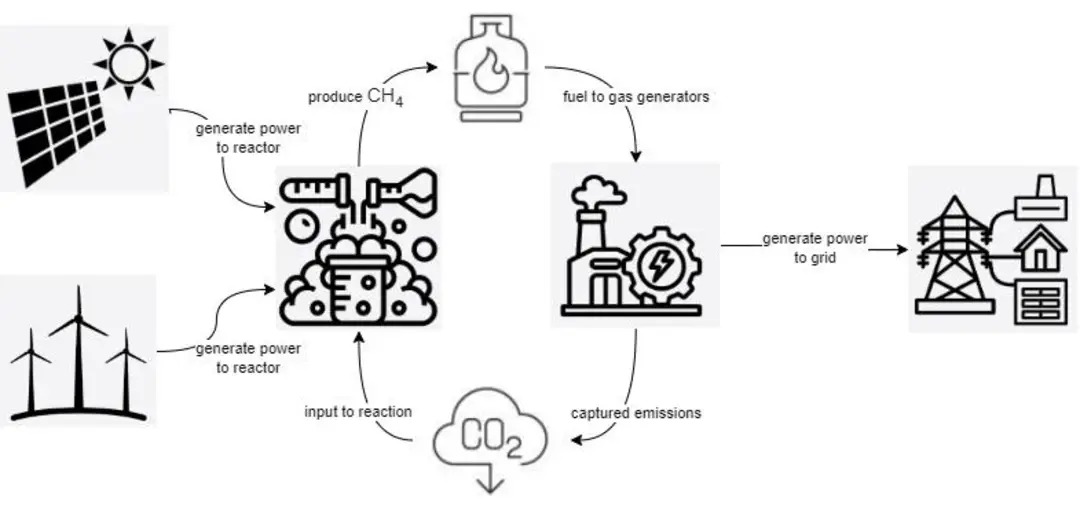We should look into diverting all solar and wind generation to storing energy as covalent bonds between hydrogen and carbon or nitrogen, as non-fossil fuels that can then be applied toward reliable power generation later in time.

We could integrate a micro reactor to implement the Sabatier reaction (CO₂ + 4H₂ → CH₄ + 2H₂O) into every solar and wind farm, disconnecting its output from the grid. Pair it with a miniaturized combined cycle natural gas peaking generation plant (connected to the grid) to consume that methane as needed. This becomes a closed system, where the CO₂ is recaptured and recycled into fuel.
Renewables already need natural gas generation as backup. If we desire to shift more generation to unreliable and intermittent solar and wind, we can only achieve reliability through power storage. Battery technology is too expensive and not scalable to grid scale overnight power production. This concept reshapes how renewables work in tandem with gas generation with the addition of a reactor for methanization as well as emissions capture to provide a closed fuel cycle.
